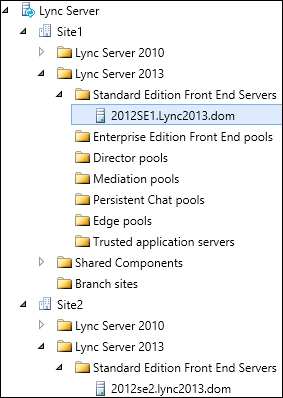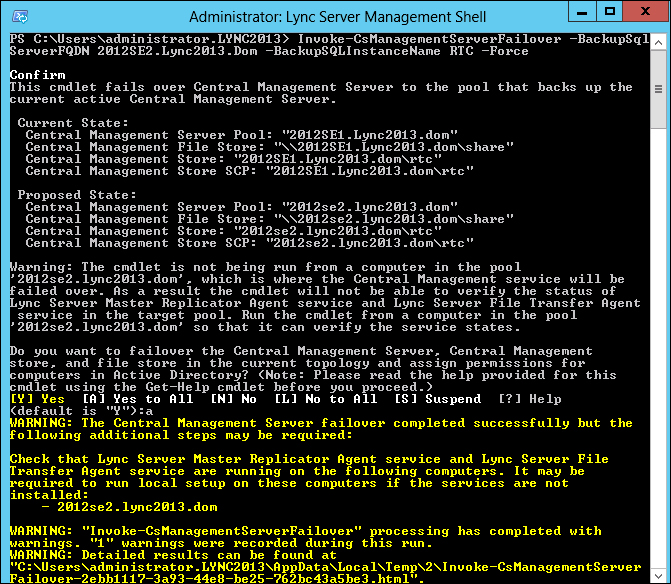I have prepared an environment to test the pool pairing failover and failback based on two different sites (Site 1 and Site 2) and a Standard Edition server in each site, as shown in the following diagram:

- The first step is to modify the topology using the Topology Builder. We have to select one of the Standard Edition servers and select Edit Properties.

- The modifications we have to perform in the Front End properties (as shown in the following screenshot) are as follows:
- Modify the Resiliency parameter.
- Check Associated backup pool.
- Select the other server from the drop-down menu.
- Check Automatic failover and failback for Voice (if we want to use such a feature).

- When we publish the topology, we will receive a to-do list to complete the configuration.
- To activate the changes, we have to run the setup file or remove the Lync server components (in the Lync deployment) on both Lync Front Ends.
- One of the things that will happen now is the installation of the Lync Backup Service, as shown in the following screenshot:

- To check the status of the pairing, we have to launch the Lync Management Shell and run the
Get-CsBackupServiceStatuscommand, as follows:
- If everything is working properly, we can test the failover with the
Invoke-CsManagementServerFailover –BackupSqlServerFQDN 2012SE2.Lync2013.Dom –BackupSQLInstanceName RTC –Forcecommand. The result is shown in the following screenshot:
During the failover and the subsequent failback procedure, we could receive some warnings. Usually they are informational ones; the logfiles generated during the process are the first tool to troubleshoot issues if they arise.
- It is now possible to verify whether the users have been moved from one Standard Edition server to the other. The easiest way is to open the Lync Control Panel and look for the server where the users are now homed.
- We are able to fail back the users with the
Invoke-CsPoolFailBack -PoolFqdn 2012SE2.Lync2013.Domcommand.
Note
We could have errors in the process, and those can be resolved by following the articles at http://social.technet.microsoft.com/Forums/nl-NL/lyncserverpreview/thread/95b6528f-7521-48c7-99e2-223bddeb7b0c and http://ocsguy.com/2012/11/06/lync-backup-service-related-cmdlets-fail/. The first error, Can not update database xds since the database state is not up to date, seems to be a common one.
